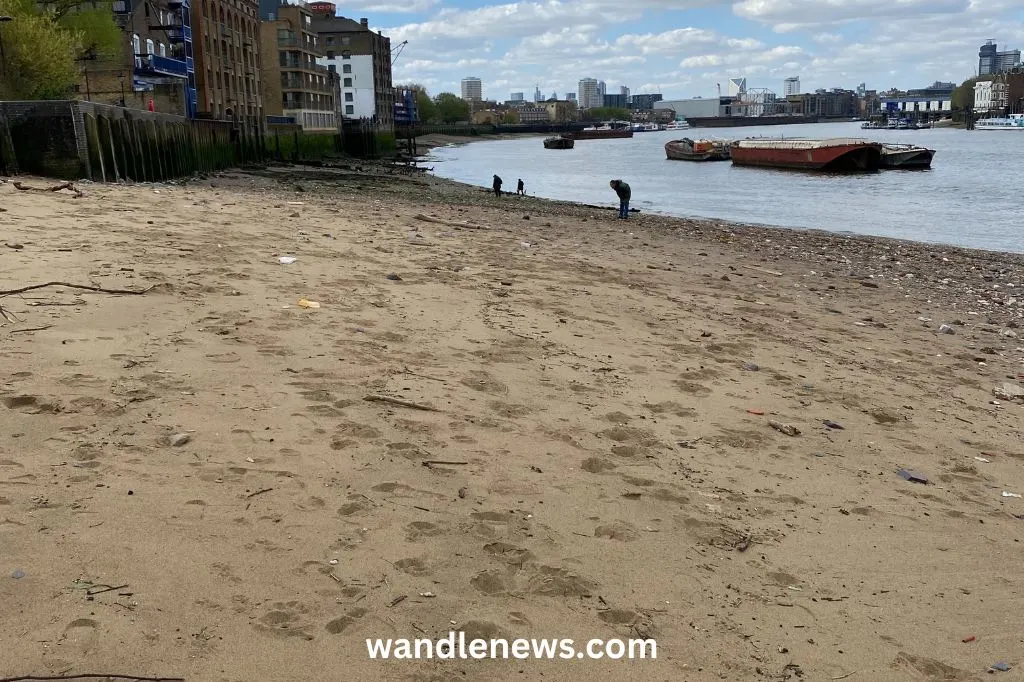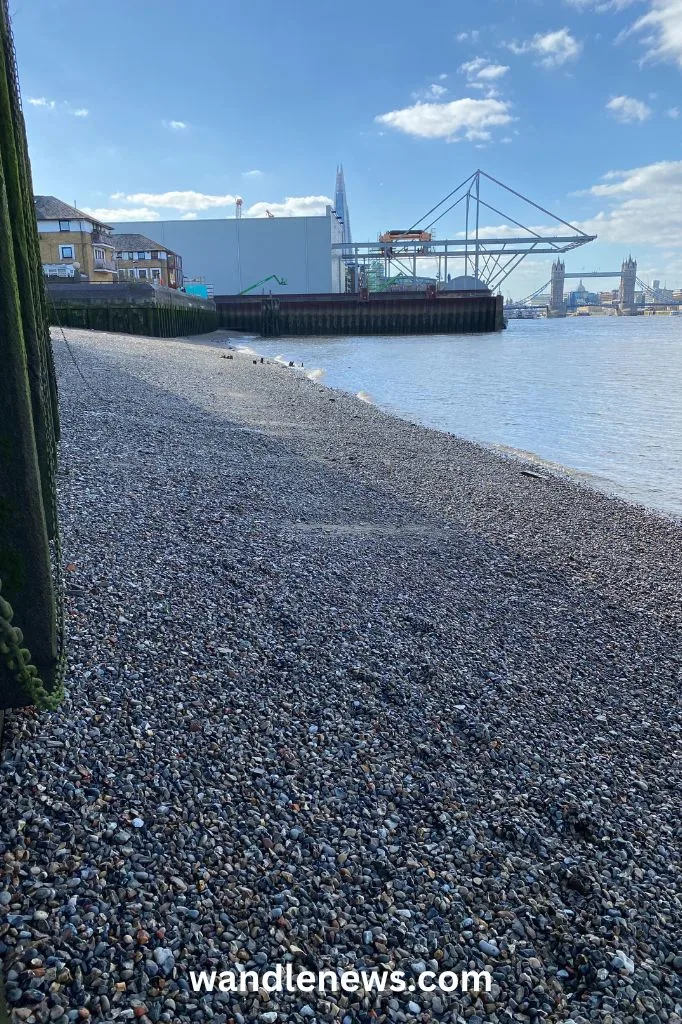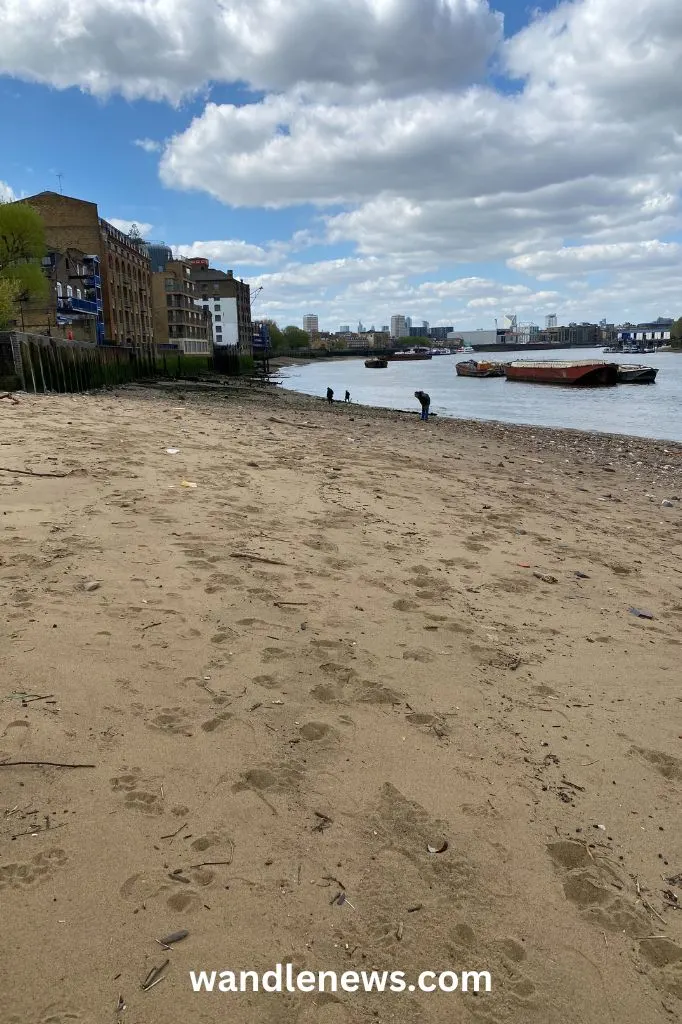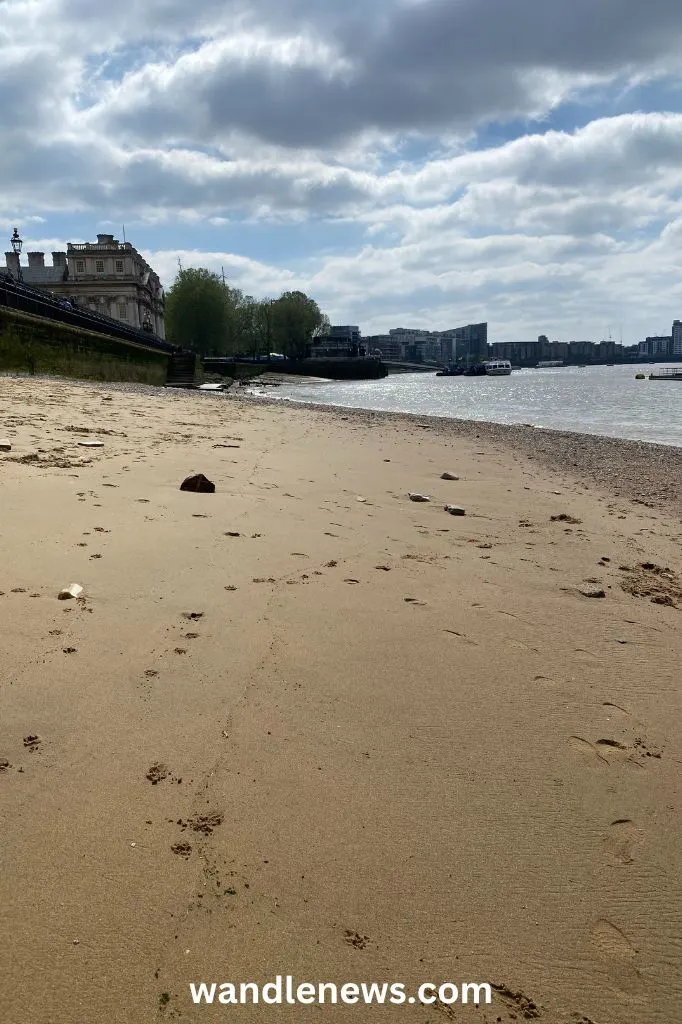The beaches on the river Thames are sections of the Thames riverbed which are revealed at low tide, and completely covered at high tide. I’ve been exploring all the beaches long the Thames foreshore to find the best places for mudlarks. This post lists seven great locations for beachcombing.

Beaches on the Thames
Map of the Best Beaches on the Thames
Check out my list of all the best places to access the foreshore of the River Thames at low tide.
1. Bermondsey Beach

Bermondsey Beach is found on the south side of the river Thames, in between Rotherhithe and Tower Bridge. It’s just a short walk away from the historic riverside street, Shad Thames.
This stretch of the river Thames was once an area filled with docks and wharves, and a good place for mudlarks to find items connected to London’s maritime history. This is a very stony beach with no sand.
Find out more about Bermondsey Beach.
2. Rotherhithe Beach

Rotherhithe Beach is one of the easiest beaches on the Thames to access. The stairs from the Thames path lead down onto a tiny strip of sand. Many of the other beaches on the Thames are mostly made up of large stones or pebbles, but a lot of Rotherhithe beach is wet sand, which I found easier to walk on.
In Victorian times, this section of the Thames was a thriving dockyard. It’s a good place for mudlarks to look for the remains of ships, and items that may have fallen overboard.
Find out more about Rotherhithe Beach.
3. Wapping Beach

Wapping Beach is a beautiful beach, however I found the access points a bit steeper and more slippery compared to Bermondsey and Rotherhithe Beaches. There are also lots of large stones on Wapping Beach to climb across.
Wapping Beach stretches from King Henry Stairs, at Execution Dock, to The Prospect of Whitby pub. This beach has a dark history, as it was where pirates and other maritime criminals were hanged for their crimes at sea.
The area was also once filled with narrow cobbled alleyways, taverns, inns and brothels. Today, a few of the cobbled alleyways still exist, including the one next to The Prospect of Whitby pub. The stretch of Thames foreshore behind the pub is known as The Prospect of Whitby Beach, and is part of Wapping Beach.
Wapping Beach is a great place for mudlarks as this area was once bustling with activity in the 18th and 19th centuries.
4. Folly House Beach
Folly House Beach is a small strip of the Thames foreshore on the Isle of Dogs, opposite the Millennium Dome. In the 19th century, this part of the river Thames was used for building metal ships, and is a good spot for mudlarks to look for artefacts from London’s shipbuilding industry.
5. Tower Beach
Tower Beach used to be on the north bank of the river Thames, next to the Tower of London. This section of the Thames was open to the public from 1934 to 1971, but is now closed off. Today, Tower Beach is located on the south side of the river. There are stairs are on the eastern side of Tower Bridge.
As you go down onto Tower Beach, you will see the remains of an old jetty. This is a popular spot for mudlarks, due to the area’s rich history.
6. Bankside Beach

Bankside Beach is on the south bank of the river Thames in between Millennium Bridge and Blackfriars Bridge. This beach has easy access, and is usually a popular beach not only for mudlarks, but also tourists due to its central location.
Bankside beach is a stony beach with a small strip of sand. I’ve seen a lot of wildlife on this beach, as it’s a popular spot for Thames birds.
Find out more about Bankside Beach.
7. Greenwich Beach

Greenwich Beach is a great place to mudlark, as it is the site of the shipyard that was once connected to Greenwich Palace. Nearly all the items found along this stretch of the Thames can be traced back to the palace. This includes pots, dishes and cooking utensils.
Find out more about Greenwich Beach.
Useful Information for Mudlarks
- Complete Guide to Mudlarking on the Thames
- Thames Foreshore Access Points for Mudlarks
- 3 Best Mudlarking Books for Beginners
- My Mudlarking Experience with the Thames Explorer Trust
This Post was a List of Beaches on the River Thames
Thank you for reading my post about beaches on the river Thames. Remember that the Thames is a tidal river, so you will need to check the tide times before you go. I recommend Wily Weather as the website tells you whether the tide is currently rising or falling. Also remember that the beaches mentioned in this post are excellent places for mudlarks, but they are definitely not traditional beaches and certainly not swimming locations!
